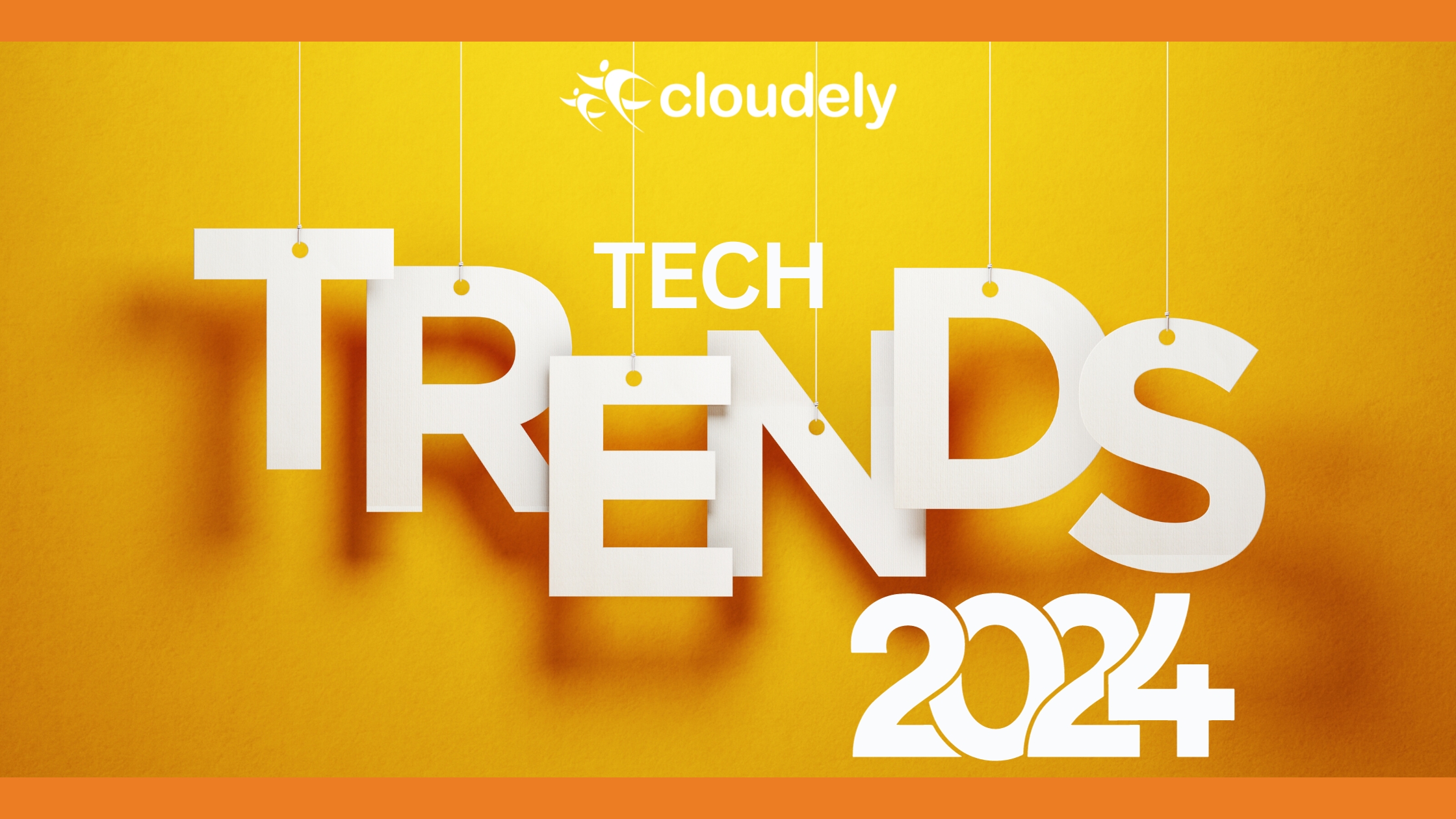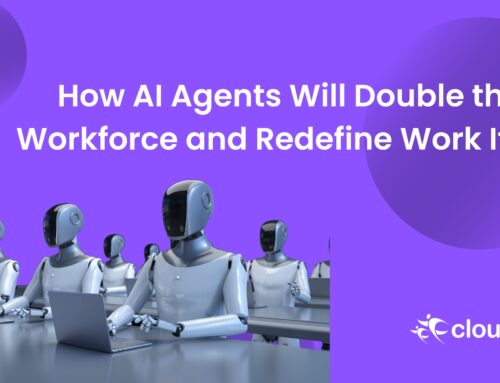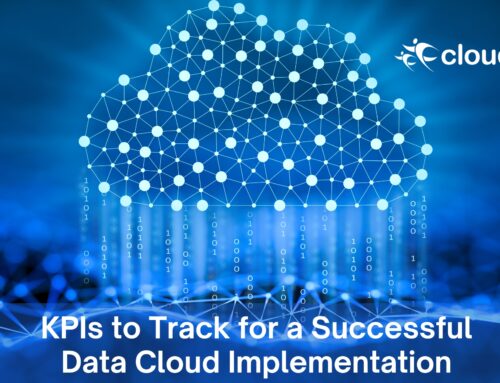Technological innovation is accelerating rapidly, bringing both opportunities and challenges for businesses. To stay competitive in 2024 and beyond, companies must actively monitor emerging technology trends and understand how to leverage them. This requires proactive preparation and training for employees to adopt new tools and workflows.
Businesses that need to adapt avoid falling behind. The key is taking a strategic approach: evaluating each trend, assessing its applicability, and taking the necessary steps to integrate it advantageous. With focus and foresight, businesses can harness the top tech trends of 2024 for sustainable success.
Table of Contents
Democratized Generative AI
Generative AI leverages large neural networks to generate new content like text, images, audio, and video. With computing power and open-source frameworks becoming more accessible, Generative AI is getting democratized.
Preparing for Democratized AI
- Train employees on using Generative AI tools like DALL-E for creative tasks.
- Leverage Generative AI for content creation and personalization.
- Be aware of risks like bias and misinformation. Set up controls.
- Hire machine learning experts to build custom Generative AI models.
- Upskill creative and technical teams on generative AI applications and integrate them with existing workflows.
- Start testing generative AI on low-risk use cases and iteratively expand based on learnings.
Statistics
- By 2026, over 80% of enterprises will use Generative AI in production, as per Gartner.
- According to a Deloitte survey, 61% of organizations adopted Generative AI in 2022. The adoption is estimated to reach 88% by 2024.
AI Trust, Risk, and Security Management
With increasing AI adoption, managing trust, ethics, and security risks is critical. AI Trust, Risk, and Security Management (TRiSM) provides controls and tools for responsible and safe AI use.
Building Ethical and Secure AI
- Appoint cross-functional AI Ethics boards for oversight.
- Implement tools for monitoring AI risks continuously.
- Develop mechanisms to identify and mitigate harmful AI outcomes.
- Hire responsible AI leads and data security experts.
- Develop model risk assessment procedures aligned with business priorities and ethical values.
- Evaluate AI trust and risk solutions from IBM, SAS, and Microsoft vendors.
Statistics
- Gartner predicts AI TRiSM can eliminate 80% of faulty information by 2026.
- According to a Capgemini report, 62% of organizations perceive AI ethics as important.
AI-Augmented Development
AI can significantly enhance software engineering and application development by helping developers code faster, optimize designs, and reduce bugs.
Boosting Development with AI
- Leverage AI-powered code completion tools like Konfeeg.
- Automate testing using AI-based tools.
- Hire AI engineers to build custom models for development tasks.
- Strengthen DevOps culture to assimilate collaborative human-AI development environment.
Statistics
- The AI software market is predicted to reach $126 billion by 2025, as per a Tractica report.
- AI-augmented development can enhance productivity by 50%, as per Gartner.
Intelligent Applications
Intelligent applications have in-built AI capabilities like machine learning, natural language processing, and computer vision to adapt dynamically to users and contexts. They exhibit human-like intelligence and behavior.
Creating Smart Apps with AI
- Identify use cases for intelligent apps aligned with business goals.
- Leverage cloud-based AI services like Azure Cognitive Services.
- Continuously train AI models on new data.
- Hire data scientists and UX designers to build intelligent apps.
- Partner with AI cloud providers like AWS, GCP, and Azure to leverage pre-built ML capabilities.
Statistics
- By 2024, over 500 million digital assistants will use conversational AI, as per a Juniper Research report.
- According to a Deloitte survey, 61% of organizations have implemented some intelligent applications.
Augmented Connected Workforce
The augmented-connected workforce uses AI and analytics to optimize human talent development and productivity. As skills become obsolete quickly, augmenting humans with technology is critical for business success.
Optimizing Talent with AI
- Provide AR/VR tools to enhance collaboration and training.
- Implement workforce analytics solutions.
- Leverage AI chatbots for better employee engagement.
- Hire learning and development experts to create AI-driven learning programs.
- Develop feedback systems to improve AI augmentation capabilities.
Statistics
- According to Gartner, 25% of CIOs will use augmented workforce initiatives by 2027.
- The workforce management software market is expected to reach $9.5 billion by 2025, per Mordor Intelligence.
Continuous Threat Exposure Management
In contrast with periodic compliance audits, continuous threat exposure management provides ongoing visibility into the evolving cyber risk surface of the digital enterprise.
Managing Risk Proactively
- Conduct regular audits of processes, infrastructure, and controls.
- Implement automated tools to monitor assets and detect threats.
- Test incident response strategies through simulations.
- Hire cybersecurity experts like threat analysts and ethical hackers.
Statistics
- According to Gartner, organizations applying continuous threat exposure management can reduce breaches by 66% by 2026.
- As per Fortune Business Insights, the global managed security services market is expected to reach $53.4 billion by 2028.
Sustainable Technology
Technology has a critical role to play in environmental sustainability. Emerging tools for monitoring emissions, optimizing processes, coordinating offsets, and tracking supply chains allow businesses to improve climate performance.
Leveraging Tech for Sustainability
- Adopt cloud computing and virtualization for greener operations.
- Use IoT sensors for tracking environmental impact.
- Develop responsible AI principles aligned with sustainability.
- Hire corporate social responsibility and sustainability officers.
Statistics
- According to Gartner, 25% of CIOs will have sustainability-linked incentives by 2027.
- 48% of IT leaders consider sustainability extremely or very important, as per a Spiceworks Ziff Davis report.
Platform Engineering
Platform engineering focuses on building reusable technical platforms for accelerating software delivery.
Building Reusable Platforms
- Adopt DevOps practices for improved collaboration.
- Leverage low-code cloud platforms like OutSystems.
- Enable self-service access to platforms for citizen developers.
- Hire platform engineers and DevOps specialists.
Statistics
- As per Gartner statistics, 75% of organizations will have significant platform engineering capabilities by 2026.
- The application platform market is predicted to reach $19.5 billion by 2026, according to MarketsandMarkets.
Industry Cloud Platforms
Industry cloud platforms provide pre-built capabilities tailored for specific industries through composable services.
Implementing Industry Cloud Solutions
- Evaluate industry cloud platform solutions like Cloud for Consumer Goods.
- Integrate ecosystem partnerships through platform APIs.
- Leverage industry-specific data models and benchmarks.
- Hire industry vertical experts alongside cloud architects.
Statistics
- According to Gartner, 70% of enterprises will adopt industry cloud platforms by 2027.
- According to a Kenneth Research report, the industry cloud market will reach $127.8 billion by 2030.
Machine Customers
Smart connected products embedded with AI for autonomy and reasoning increasingly act as customers, capable of procurement with little human involvement.
Adapting to Machine Customers
- Design business models considering machine customers.
- Optimize sites and apps for conversational interfaces.
- Continuously train AI systems using new data.
- Hire roles like recommendation system engineers.
Statistics
- Gartner finds that fifteen billion connected products could behave autonomously as customers by 2028.
- According to a Juniper Research forecast, Chatbot and virtual assistant spending will reach $27 billion by 2025.
Preparing for the Future
Technology waits for no one. The trends outlined above demonstrate the time is now for businesses to ready themselves for the tech landscape of 2024 and beyond. Technology alone does not guarantee success, but combined with proactive leadership, reskilling, and sound implementation, it can catapult organizations into the future.
Businesses choosing inaction and delay risk profound disruption. However, companies can flourish in the years ahead by leaning into emerging technologies and equipping workers. The future will reward those with a vision to thoughtfully see technology’s possibilities and rigor to maximize its benefits.
At Cloudely, we empower businesses with digital transformation. Our services span from Salesforce Implementation to Technology Staffing. Our products Konfeeg and CloudSync enable enterprises to do more with fewer resources. To learn about our services and products, please email us at hello@cloudely.com.






